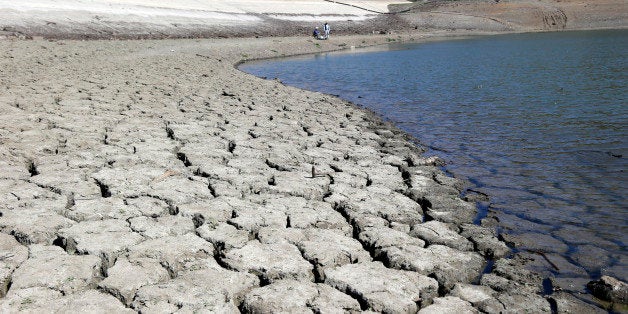
When Gov. Jerry Brown signed an executive order which mandated water restrictions across the state of California, it was a wake-up call for the world, which will continue to have water shortage problems caused by global warming and water pollution. California is grappling with trying to meet the ever increasing demand for water, while facing a limited supply. The year 2014 is Earth's warmest since 1880, according to NASA and the National Oceanic and Atmospheric Administration (NOAA). High temperatures have been the principal cause of the drought which caused the state's governor to declare a water shortage emergency in 2014, and implement water regulations. According to PBS.org, the water shortage is so severe that the city of San Diego plans to recycle sewage water for human consumption.
Recently, federal prosecutors charged Duke Energy with a crime for polluting the waterways in North Carolina, and subsequently South Carolina. Water pollution affects our environment, and global water shortages affect access to fresh water. Any time the delicate balance of having a healthier environment is compromised by corporate America, I ask myself what should be done to make sure it never happens again. Duke has been held accountable for their actions to the tune of $100 million, a slap on the wrist considering the environmental damage they have done.
According to the National Institute of Environmental Health Sciences, fresh water withdrawals have tripled over the last 50 years. The world's population is growing by 80 million people a year and water consumption is growing as well. In following the example of NIEHS, we can all decrease our personal water consumption and water consumption at the places where we work.
Keeping track of personal water consumption is only one aspect of water preservation. NIEHS reports that 59 percent of total water use in a country like the United States is industrial. Both industrial and non industrial water use place a burden on a limited supply.
As CEO of a textile recycling company, I recognize that textile manufacturing has been one of the largest sources of water pollution. The World Bank estimates close to 20 percent of water pollution comes from textile treatment and dyeing. About 72 toxic chemicals reach our water supply from textile manufacturing, some of which cannot be filtered or removed.
In 2012, five environmental NGOs published a report entitled, "Cleaning up the Fashion Industry." Several multinational brands responded by identifying pollution records in their supply chain and pushing suppliers to explain violations and take follow-up action.
Unfortunately, according to "Sustainable Apparel's Critical Blind Spot ," a subsequent joint report by Friends of Nature, the Institute of Public and Environmental Affairs, Envirofriends, and Nanjing Greenstone, there are still several major brands that have made limited or no response to questions regarding their supply chain pollution records.
It is time to stop taking pure water for granted. We are facing a global crisis. A 2011 study showed that 150 million people currently live in cities with water shortages. By 2050, that figure will increase to more than one billion, with India being impacted the most, according to the 2011 study "Urban Growth, Climate Change, and Fresh Water Availability". The study found that cities in West Africa, as well as Manila, Beijing, Lahore, and Tehran will all face severe water shortages.
In 1980, the U.S. produced 100 to 150 million pounds of pesticides that were too dangerous for domestic use, according to Josh Kearns, an environmental writer. Many of these pesticides of been exported to other countries. Agrichemicals that have been banned in the west have been detected in human breast milk in India. Many of these chemicals have a high risk of contaminating ground water and causing toxicity to marine life. Furthermore, these nations with less stringent environmental standards, export goods (including fruits, vegetables, and cotton) back to the U.S. and European countries.
The consequences of human alterations of the environment for economic gain range from climate change to serious public health concerns. Duke Energy's actions remind me of the Aral Sea disaster. In the '60s, the Soviet government diverted water from the Aral Sea for agriculture, mainly cotton. This diversion has caused the sea to dry out over the past five decades. It was once the world's fourth largest saline lake, according to Columbia University. Duke Energy is not alone. Many corporate CEOs hold the same disregard for the environment, and this must change.
As easy access to potable water decreases, conflicts over water may increase. Now, countries fight over oil and energy, in coming years conflicts may arise over water. According to the United Nations, more than 150 international water agreements have been signed in the last 50 years. These treaties are necessary because water flows from one country to another.
In the book, Water, Peace, and War: Confronting the Global War Crisis, Brahma Chellany asserts that the Arab Spring was a result of rising food prices caused by the lack of fresh water. The UN notes there are 37 water-related violent actions between countries since World War II.
According to Greenpeace, there are disturbing facts about water we should know:
- Only 2.5 percent of the planet's water supply is fresh water.
- The majority of clothing from some big fashion brands contains hazardous chemicals, which can be hormone disrupting and cancer causing when released into waterways around the world.
- Every individual -- man, woman, and even unborn child -- carry hundreds of manmade chemicals in their body, including some that can be linked to the textile industry.
Detoxing the supply chains for the textile industry must be a primary goal. The methods in which we sustain our water are critical to human survival. California's water crisis may only be a drop in the bucket, compared to what can be in America's future, if things don't change.